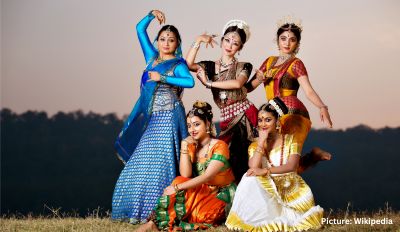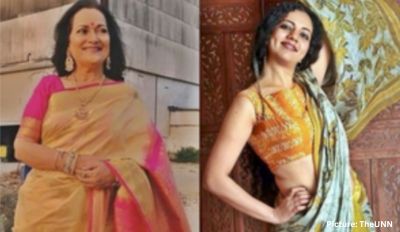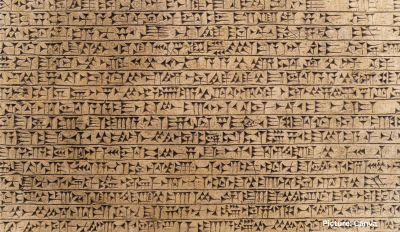Amidst the glitter and glamour of King Charles III’s coronation, the Koh-i-noor diamond was missing. The diamond, whose name means “mountain of light” in Persian, is a 105-carat jewel, which according to legend, was discovered over 800 years ago on the banks of the Krishna River in Southern India.
Over the years, it has passed through various empires, including the Mughal, Persian, Afghan and Sikh, until it eventually became the property of Queen Victoria in the mid-19th century. However, the diamond has remained steeped in controversy, and many believe that it is cursed. Traditionally, only female members of the British royal family wear the diamond, particularly queen consorts, due to its curse which supposedly affected the male members.
The diamond was last worn by Elizabeth, wife of King George VI, during her coronation in 1937 and subsequently during the coronation of her daughter, Elizabeth II in 1953. However, there is no known record of the current Queen wearing the diamond. According to tradition, King Charles III’s wife, Camilla would have been the next person to wear the diamond at this weekend’s coronation ceremony. However, instead, she wore a different crown adorned with 2,200 smaller diamonds because the Koh-i-noor has become a point of contention due to its controversial history.

The diamond was believed to be cursed, and many male royals who wore it suffered from calamities. Anita Anand, a historian who co-authored the book “Koh-i-noor: The History of the World’s Most Infamous Diamond,” stated that “Every time you bring someone over from India or Pakistan, they just swear at it! Swear at the fact that it’s here.” The diamond is wanted back by India and several neighbouring countries, including Iran and Afghanistan, whose rulers and royals, over the centuries, had possession of it.
Despite the diamond’s controversial past, the British monarchy still claims ownership of the diamond and intends to keep it. As a result of the protests, the Koh-i-noor has become a “symbol of conquest” deeply rooted in British soil, a fact which has outraged the Indians who are visitors to the Tower of London, where the gem is currently kept on display. The Indian government has repeatedly raised the issue of repatriating the diamond with the British government. After Queen Elizabeth’s death last year, Buckingham Palace made an announcement: The Koh-i-noor diamond would not be a part of King Charles III’s coronation ceremony, remaining safe and secure in the Tower of London.
Unearthing a Coconut-Sized Diamond
Centuries ago, diamonds were discovered by surfacing up to the Earth’s topsoil before being mined. The Golconda alluvial mines in southern India were particularly known for this phenomenon, where the largest diamond of the time was discovered approximately 800 years ago. “People used to go to the rivers and take baths, and there were no soaps or cosmetics at the time, so they used the wet clay next to the riverbanks and applied it to their bodies,” explains Mohan Devarapalli, a local tour guide who specialises in Koh-i-noor-themed tours. While collecting clay, someone stumbled upon the diamond, which was rumoured to be the size of a coconut.
Believing that the diamond was a gift from the holy river, the locals presented it to the 12th century Hindu kings of the Kakatiya dynasty to keep it safe. Unfortunately, India was full of warring states at the time, making it challenging to protect the diamond from the prying eyes of others. They placed the diamond inside the eye socket of a large golden statue of the Hindu goddess Durga, located in a temple that is still in use today in Warangal city, near a lake. One eye was diamond, and the other was glass, with both appearing identical except for the kings who knew the diamond was hidden inside.
“One of the [goddess’] eyes was the diamond, which no one knew — except the kings — because it looked like glass. Even the priests, they would not have known it,” explained Devarapalli. As a result, it was one of the most well-kept secrets to hide the diamond. For a few centuries, the ploy of hiding the gemstone in plain sight appeared to work.
Since then, the diamond has had an eventful journey. After the Mughal Empire’s conquest of the region, the diamond became part of their spoils and an essential part of numerous battles. Eventually, the British moved the diamond to the Tower of London as the spoils of war in the mid-19th century, where it is currently a part of the Queen’s crown jewels. Despite the diamond’s journey across history, it remains one of the most famous and important diamonds globally, with its folklore and symbolism continuing to captivate the world.
The Koh-i-noor: A Diamond of Bloodshed and Conquest
The Koh-i-noor diamond has a long and disputed history, originating from the Golconda area of southern India. Its story begins with the Kakatiya dynasty, who guarded the precious gem until it was pillaged by invaders from the north in the 14th century. The diamond eventually ended up embedded in the Peacock Throne of Shah Jahan, the Mughal emperor who also built the Taj Mahal. The Peacock Throne was later captured by Nadir Shah of Iran, who passed the diamond on to Ahmad Shah Abdali, founder of Afghanistan. The Afghans believe strongly that the diamond belongs to them.
As the diamond changed hands from one conqueror to another, legends of curses began to circulate. Indian astrology teaches that only a pure man without sin – a great man – can wear a diamond without risking bad luck. Anyone who is flawed, or any diamond that is flawed, must be treated with caution. The Koh-i-noor diamond, with its disputed history and murky past, has been the subject of many curses.
The arrival of the British added another chapter to the story of the diamond. The East India Company arrived in the 17th century, followed by British colonial rulers. By this time, the diamond was only worn by women. Queen Victoria had a particular interest in the Koh-i-noor and was keen to add it to her collection. In 1849, the British obtained possession of the diamond and presented it to Queen Victoria, who had it re-cut to improve its brilliance.
Today, the Koh-i-noor diamond remains a highly prized treasure, and its history and origins are still a matter of dispute and disagreement. As historian William Dalrymple says, “it’s the nearest thing to the ring of power in Lord of the Rings. Whenever it goes, it stirs up anger, greed, murder and bloodshed!” Its storied past adds to its mystique and allure, and it remains one of the most famous diamonds in the world.
The Koh-i-noor: A Gift to Queen Victoria from a Conquered Nation
The diamond has a long history, having been possessed by various rulers, including the Sikh Maharaja Duleep Singh. In 1849, during the second Anglo-Sikh war, British diplomats befriended the young prince and confiscated the diamond. It was then presented to Queen Victoria, who had it fashioned into a brooch.
Today, the Koh-i-noor remains in the UK’s possession, and its loss is still a source of frustration and hurt for many Indians. This is highlighted in a sound-and-light show for tourists in Hyderabad, where the famous Indian actor Amitabh Bachchan laments the diamond’s location. The show projects a holographic replica of the diamond, which is met with disappointment from the audience who believe it to be the real thing.
Many Indians feel that this is a clear example of the British colonial past, where items were taken from their rightful owners without return. Saudamini Sharma, a tourist visiting the fort, explains: “The British never apologized about anything…civilized people don’t steal — don’t take away stuff and never return it.”
The Koh-i-noor is a symbol of a complex history between India and the UK, and whilst it remains in the UK’s possession, it will continue to be a contentious issue.
India’s Demand for the Return of a Stolen Gem
The question of ownership surrounding the Koh-i-Noor diamond has been a sensitive issue for many years, with calls growing louder for the diamond to be returned to its original home. The diamond has been held in what is now India, Pakistan, Iran, and Bangladesh, and even the Taliban claim it is theirs.
Western governments are starting to address ownership issues surrounding cultural heritage, such as Jewish art looted by the Nazis and colonial artifacts in British museums. The Benin Bronzes were recently returned to Nigeria, and Greece is currently asking the British Museum to return the Elgin Marbles.
Despite these movements, the UK government and the Royals have rarely commented on the Koh-i-Noor. In 2010, then-Prime Minister David Cameron said returning the diamond would set a dangerous precedent for British institutions. He stated, “What tends to happen with these questions is that if you say yes to one, you suddenly find the British Museum would be empty!”
As of now, the British sell tickets to see the diamond, with prices for adults being around $37. The Koh-i-Noor was the star attraction at the World Exhibition at the Crystal Palace in London in 1851. It was for this exhibition that the diamond was cut down, reducing it by at least 85 carats, following technological advancements in “brilliant” cut diamonds which required a reshaping of the diamond to refract more light.
“To Indians, it’s actually a perfect metaphor for what India went through: It was reshaped and re-cut and diminished into something that suited a British palate and British needs,” says journalist and writer Anita Anand. She highlights that it represents the wider issue surrounding the history of the British Empire, which is rarely taught in British schools. “We don’t really learn about the history of empire! It’s painted as if it’s something very long ago, not really interesting—and yet, it shapes the world we live in today.”
Last year, India and Pakistan celebrated 75 years of independence from the British crown, but for many, the story is incomplete while the British crown still holds their diamond. The call for its return has grown louder, highlighting the need for Western governments to consider issues of ownership in regards to cultural heritage.










